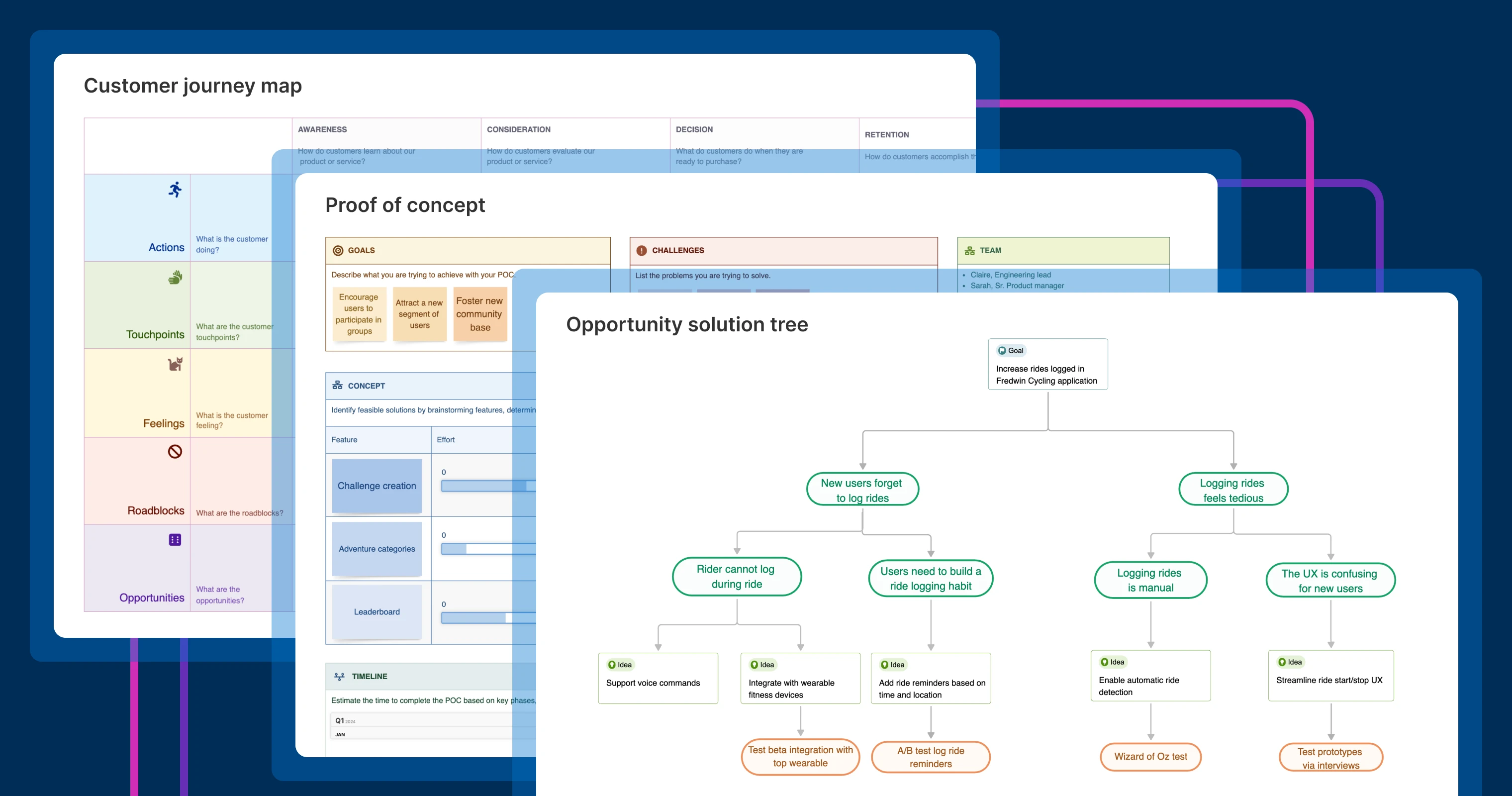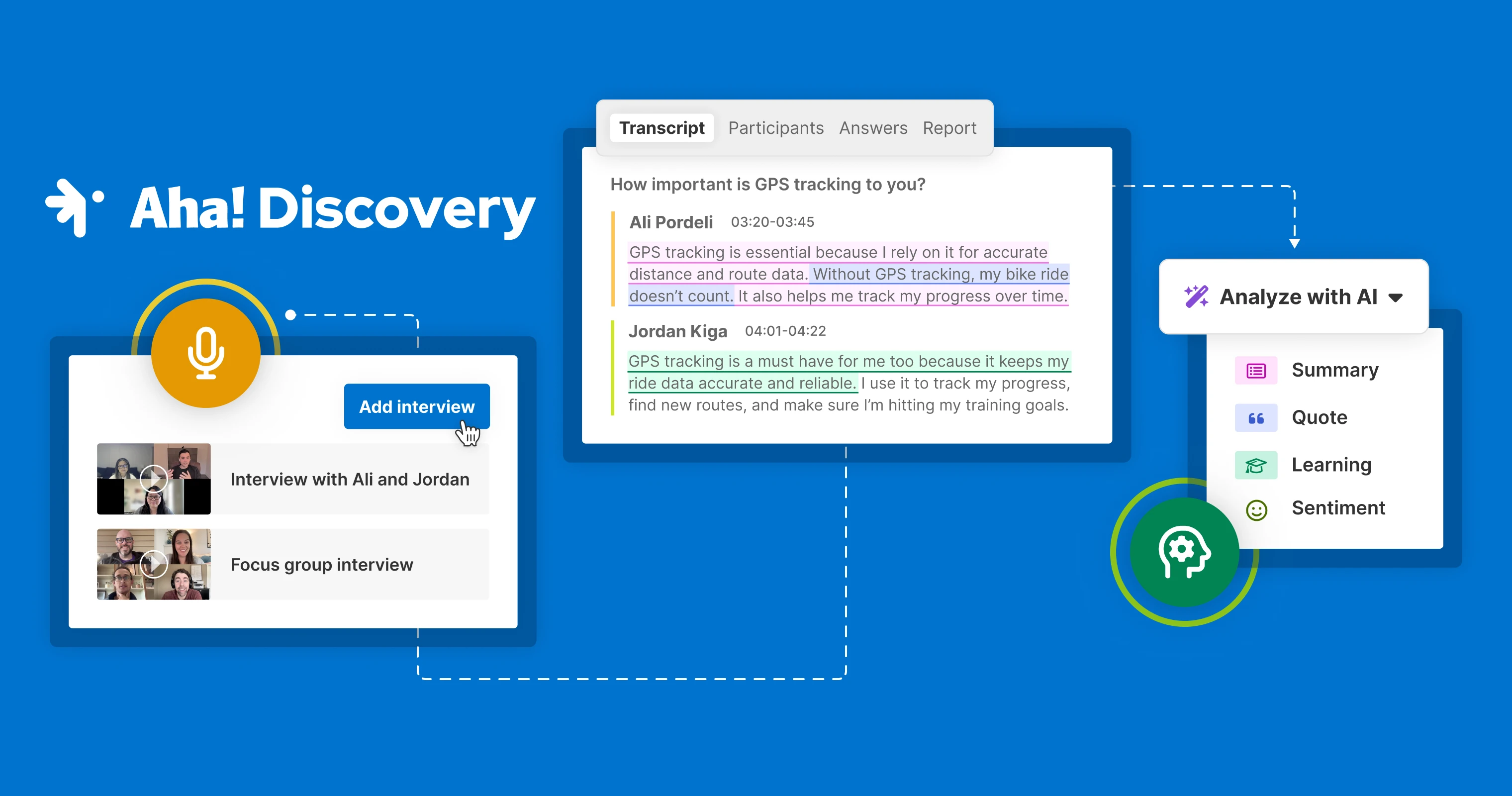
The Aha! product team uses Aha! Discovery (naturally) to plan customer research and incorporate learnings. | Photo by Jodi B Photography
The surprise costs of skipping customer discovery
I recently caught up with a former colleague who seemed unusually defeated. When I asked how things were going in her new role, she confided that the team had abandoned its third major initiative this year. The reason was the same each time: low customer adoption.
And each time, instead of going to customers to better understand their needs, the directive from the top was to build something else, faster. (Usually a reaction to whatever their biggest competitor had just launched.)
It feels like being stuck on spin cycle — whipping through new features and shipping functionality that no one actually wants.
The pressure to ship fast creates a dangerous dilemma. The faster you move without direction, the further you drift from what customers need.
The funny thing (well, not so funny if you are currently stuck on spin cycle) is that there is a proven way to avoid this. When you make the effort to ask your customers what problems they have, they tend to tell you.
This requires product teams to do real customer discovery — as in, talk to customers on a regular basis. Even though product folks know that this is one of the most critical inputs to product planning, many executives are reluctant to carve out the time and resources for this important work.
Why do some execs resist real customer discovery? This is what my friend told me their boss usually says:
"We need to keep moving — customer calls will slow us down."
"We already know what they want."
"User interviews do not uncover anything new."
"Customers don't know what they want anyway."
Here is what I told my friend:
"We need to keep moving … " Speed matters. But building the wrong thing is the slowest path of all.
"We already know … " Discovery helps you move faster in the right direction.
"User interviews do not … " Consider who you are speaking with and what questions you are asking.
"Customers don’t know … " It is not their job to know; it is your job to find out.
It is nearly impossible to know what the right thing is to build without talking to the people who will actually use it.
The unfortunate truth is that many execs do not want to invest in customer discovery because they do not think it directly drives revenue. And this leads to deferred discovery in favor of quicker and cheaper alternatives.
Product teams settle for basic surveys and competitor analysis instead of the real thing. Surveys can tell you what people think of a feature mockup on a scale of one to 10, but not about the problems that customers are most desperate to solve. And competitor analysis can only tell you what other people are building.
Shortcuts always backfire. But if you are facing this resistance in your organization, do not despair. There are tactical ways to break through the objections and start building the discovery muscle your product team needs.
Here are five tactical things you can do to make the case for customer discovery:
Start small: Suggest a lightweight pilot — one experiment addressing a specific problem — instead of a large-scale investment.
Make it tangible: Meet execs where they are and connect the outcomes of the pilot to current business objectives (e.g., time savings, cost reduction, or increased adoption).
Show quick wins: As you gather early insights, highlight the ones that change product decisions for the better so that you can demonstrate early impact.
Involve your boss: Invite them to listen to select conversations so that they can hear valuable feedback firsthand.
Compare and contrast: Show what happens when you guess vs. when you know by doing a comparison of the early ideas against customer insights.
Frame customer discovery for what it is — a business necessity, not a navel-gazing, nice-to-have research project.
Real discovery is systematic investigation into how people currently solve problems. It is essential to the health of your product. The best product teams I know live and breathe customer discovery — it is continuous and nonnegotiable.
Even in the most challenging environments, product teams who persist in advocating for customer discovery eventually see the culture shift. These are the teams who never stop fighting to move in the right direction and to deliver real value with what they build. And that fight is always worth it.
Build better products with customer insights — try Aha! Discovery free for 30 days.




